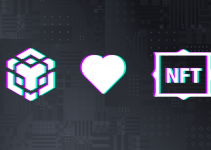Table of Contents

In 1995, Amazon was just a bookstore. In 2009, Uber was just an idea. Today, we’re witnessing another watershed moment as DePIN (Decentralized Physical Infrastructure Networks) begins to transform how we think about infrastructure, ownership, and value creation. Like the early internet and sharing economy pioneers before them, today’s blockchain innovators are choosing different paths to shape this revolution.
What is DePIN, and Why Should You Care?
Think of DePIN as a bold reimagining of how we build and maintain the world’s infrastructure. Instead of relying on centralized corporations, DePIN creates community-owned networks where individuals and businesses can contribute their resources—whether that’s computing power, storage space, or network bandwidth—to build something bigger than themselves.
This isn’t just another blockchain buzzword. It’s a $32 billion ecosystem projected to reach $3.5 trillion by 2028, where pioneers are already proving decentralized infrastructure can work at scale. From Filecoin’s storage network managing exabytes of data to Hivemapper creating community-powered digital maps, these projects are showing how collaborative networks can outperform traditional centralized systems. It’s like building a city together—where every participant contributes to and benefits from the shared infrastructure.
As with any transformative technology, different pioneers approach DePIN integration in their own way. Some wade in carefully, others dive deep, and a bold few rebuild everything from the ground up. Let’s explore these three pioneering approaches through the stories of those who are building the future today.
The Minimalist: Keeping It Simple
Meet The Minimalist, who follows the “start small, think big” philosophy that turned PayPal from a simple payment app between Palm Pilots into a global financial powerhouse. Just as PayPal began by solving one specific problem—making payments easier—before gradually expanding its services, The Minimalist takes a strategic approach to blockchain integration, using it precisely where it adds the most value.
Take Gaimin Cloud, for example. They’ve built a successful gaming infrastructure platform by using blockchain only for what it does best: handling rewards and settlements. This focused approach brings three key advantages to DePIN projects. First, it allows for rapid market entry—while others are building complex systems, minimalists can launch quickly and start gathering user feedback. Second, it reduces risk by keeping critical operations on proven traditional systems while using blockchain’s transparency and security for financial transactions. Third, it maintains a familiar user experience that encourages adoption—users get the benefits of blockchain without needing to understand its complexity.
At their core, Minimalists are practical dreamers and efficient executors. They understand that revolutionary change doesn’t always require revolutionary methods. Their risk-averse nature isn’t about fear—it’s about wisdom. These pioneers recognize that the path to innovation doesn’t have to be paved with complexity. Instead, they find power in simplicity, success in measured steps, and growth in gradual evolution. This pragmatic approach often proves right as their projects gain traction through reliability rather than radical promises.
The Adapter: Bridging Two Worlds
While the Minimalist’s approach has proven successful for many projects, others see blockchain as more than just a settlement ledger. They recognize that smart contracts can reshape core business logic, automating complex operations and creating new possibilities for user interaction. Enter The Adapter, who transforms traditional business processes through the power of programmable blockchain infrastructure.
In 1993, Andreessen transformed the internet from a text-only tool into a rich multimedia platform through Mosaic, the first graphical web browser. By introducing inline images and intuitive interfaces, he didn’t just improve the internet—he fundamentally changed how people could interact with it.
Today’s Adapters are making a similar leap in DePIN projects. Take Livepeer, for example. By embedding core business logic into smart contracts, they’ve revolutionized video streaming infrastructure. Their smart contracts automatically match processors with content creators, verify processing quality, and distribute rewards fairly. This automation not only reduces costs but also builds trust through transparent, verifiable code rather than corporate promises.
Adapters are thoughtful innovators who balance ambition with prudence. They’re bold enough to reimagine core processes but wise enough to preserve what works. This balanced approach stems from their deep understanding of both traditional systems and blockchain capabilities, making them natural bridges between the old and the new in the journey toward decentralization.
While Minimalists focus on settlements and Adapters leverage smart contracts, a third group sees an even greater opportunity. With foundational DePIN projects like Filecoin for storage and Livepeer for video processing already proven at scale, there’s now a robust ecosystem of decentralized infrastructure ready to be built upon.
Enter The Trailblazer, who combines these battle-tested building blocks to create fully decentralized applications, weaving together storage, compute, and governance into seamless decentralized services.
The Trailblazer: All-In on Decentralization
Meet The Trailblazer, who follows Elon Musk’s approach of rethinking entire industries from first principles. Like how Musk didn’t just build electric cars but reinvented an entire ecosystem of sustainable energy—from solar panels to power walls to charging networks—Trailblazers create comprehensive decentralized solutions by weaving together multiple DePIN services.
Consider Aggregata on BNB Chain, an AI-focused platform that showcases this approach perfectly. Instead of building everything from scratch, they’re strategically integrating existing decentralized infrastructure. They use decentralized storage networks for dataset management, distributed computing networks for AI training, and blockchain-based identity systems for access control. By combining these proven DePIN building blocks, they’ve created a fully decentralized AI platform that’s greater than the sum of its parts.
Trailblazers are visionary architects with deep technical prowess. Unlike the cautious steps of Minimalists or the balanced approach of Adapters, they see the mature DePIN ecosystem as an opportunity to build ambitious, fully decentralized systems. Their strength lies not just in technical innovation, but in their ability to orchestrate multiple decentralized services into cohesive, user-friendly platforms that push the boundaries of what’s possible in the Web3 era.
Why BNBChain: The Trailblazer’s Choice
While all three approaches to DePIN have their merits, BNBChain has emerged as the blockchain of choice for Trailblazers. Its architecture was built from the ground up to handle the demands of fully decentralized infrastructure at scale. With fast finality and costs of fractions of a cent per transaction, BNBChain makes it practically possible to coordinate thousands of decentralized devices and services in real-time.
For Trailblazers integrating multiple DePIN services, BNBChain composability is a game-changer. Decentralized storage of Greenfield and identity solutions can be seamlessly woven together. When Aggregata-style projects need to orchestrate AI training across distributed nodes, process payments, and manage data storage, BNBChain high throughput ensures these complex interactions happen smoothly and cost-effectively.
Of course, BNBChain also serves Minimalists with reliable settlement and Adapters with powerful smart contracts. But it truly shines in the hands of Trailblazers, enabling them to push the boundaries of what’s possible in decentralized infrastructure. As DePIN evolves and more services become decentralized, BNBChain stands ready to support the next generation of fully decentralized applications.
The Future is Bright
The DePIN ecosystem is evolving rapidly, and new innovations are making it even more powerful. PayFi (Payment Financing) is emerging as a game-changer, solving critical liquidity challenges for DePIN projects. Just as PayPal unlocked e-commerce growth by making online payments seamless, PayFi is enabling new possibilities through just-in-time financing and automated underwriting.
But that’s just the beginning. AI integration is opening new frontiers for DePIN projects, from optimizing resource allocation to enabling smarter device coordination. Cross-chain bridges are breaking down barriers, allowing DePIN services to operate seamlessly across different blockchains. And perhaps most excitingly, real-world assets are being tokenized and integrated into DePIN networks, creating new possibilities for managing physical infrastructure through decentralized systems.
This convergence of technologies is particularly powerful on BNBChain. Whether you’re a Minimalist starting small, an Adapter integrating smart contracts, or a Trailblazer building fully decentralized systems, these innovations are making it easier to build and scale impactful DePIN projects.


